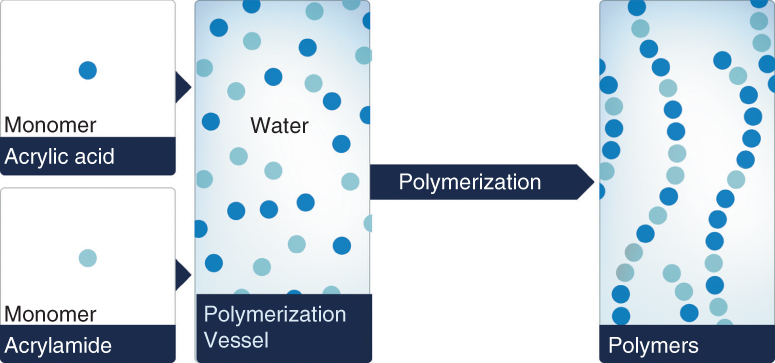Chapter four Polymers

Polyacrylamide chemistry, manufacturing, and rheological properties will be discussed in this chapter. Typical qualification tests and corresponding laboratory procedures will be detailed, providing general selection guidelines for polymer flooding design.
4.1. Introduction
Polymers are macromolecular chemical compounds that exhibit several specific features:
- Their molecular weight is high; it can range from a few thousand to several million daltons. In enhanced oil recovery (EOR) processes, average molecular weights can range between 3 and 35 million daltons.
- They are made up of repeat units named after the monomer used. Polyacrylamide, for example, is a polymer chain that consists of repeating units originating from acrylamide (Figure 4.1).
- Polymer synthesis is a complex process that generally involves several steps, each of them resulting in the formation of a bond and chain extension.
- Polymers are usually polydisperse, meaning macromolecules have the same chemical composition but different chain lengths coexisting within a sample.

Figure 4.1 From monomers to polymers: the polymerization process
In the oil and gas industry, two families are usually considered when attempting to increase the viscosity of water for reservoir sweep improvement: ...
Get Essentials of Polymer Flooding Technique now with the O’Reilly learning platform.
O’Reilly members experience books, live events, courses curated by job role, and more from O’Reilly and nearly 200 top publishers.

